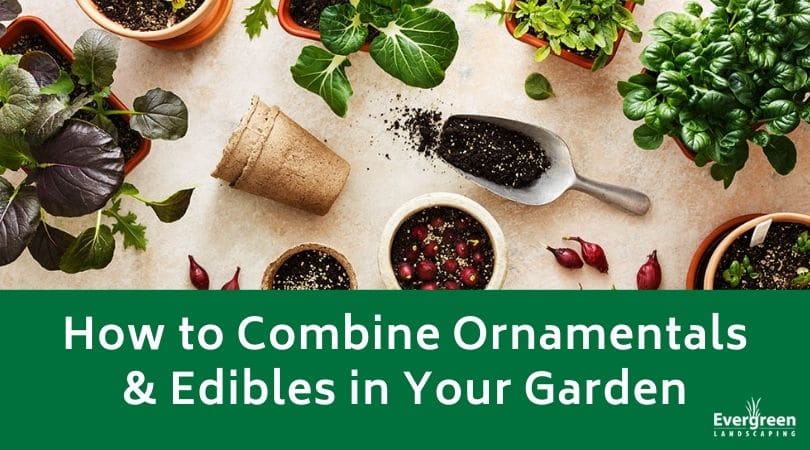
You don’t necessarily have to lock your vegetables, herbs, or homegrown foods into neat, straight rows. Instead, you get a host of exciting new options when you start tucking edibles into your landscapes, and they can go right around and in your ornamental plants without stealing nutrients or competing.
Edible landscaping is fondly called foodscaping, and it’s the process of using edible plants as part of your overall landscape design. By expertly adding edible plants into your landscape, you can easily enhance how pretty it looks while still getting large harvests and gorgeous flowers. There are several ways you can do this, and we’ll outline a few below.
Containers and Pots
Ornamentals and edible crops blend very well in pots or containers. If you want to get a Mediterranean feel, grow lavender, salvias, and Santolina, with sage, rosemary, and thyme. Annuals also work well, and you can mix fiery chili peppers with colorful chard.
Raised Garden Beds
Putting a mixture of ornamental plants with edible ones in your raised garden boxes can transform them from a very controlled look into a productive, eye-catching centerpiece. You can dot bedding plants amongst your crops for a pop of color, and they all thrive in the rich soil that the vegetables need to grow.
Underplanting
Underplanting is an easy way to combine your ornamental and edible plants. If you’re working on a larger scale, it works very well if you have fruit trees and underplant them with a range of many plants. It works well with lavender, spring bulbs, or native wildflowers. If you want to plant on a smaller scale, you can fill in the gaps in your containers with lettuce, herbs, or mizuna.
Vegetable Plots and Borders
In your garden border, you shouldn’t be afraid to plant vegetables and fruits with your dahlias. Along with getting a nice harvest, they can make elegant, architectural, and colorful additions. In your vegetable plot, edge it with a mixture of wildflowers. This can make it more appealing to pollinators, and it’s a great option to grow calendulas, fennel, and borage.
Window Boxes
If you don’t have a garden and you’re short on space, a window box is a great idea. You can grow lettuce, tomatoes, strawberries, and herbs for edibles. For the plants, you can use nasturtiums to keep pests away while attracting beneficial hoverflies that prey on aphids.
Container Combinations for Edible and Ornamental Plants
- Basil and fennel
- Fuchsia and sage
- Gazania and black-eyed Susan
- Kohlrabi and daisies
- Lavender and thyme
- Pansy, thyme and olives
- Rosemary and pansies
Planting Edible Flowers
You can plant and grow edible flowers to garnish your salads or plates or freeze into ice cubes for drinks. A few great options include:
- Chive blossoms
- Elderflowers
- Marigolds
- Nasturtiums
- Pansies
- Snapdragons
- Violets
- Zinnias
Contact Evergreen Landscaping
If you’re someone who is interested in combining ornamental flowers with edible ones and you’re not sure where to start, contact us. We’re happy to give you recommendations to help you create a stunning space while ensuring you get a bountiful harvest.

Pingback: Indoor and Outdoor Plants for Those without a Green Thumb - Evergreen Landscaping